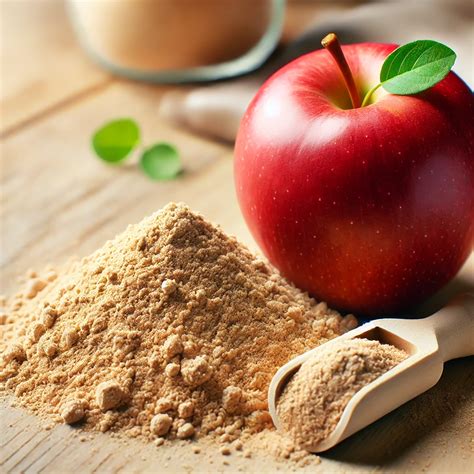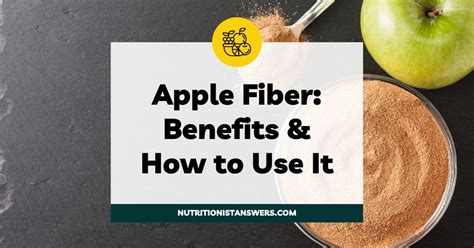Intro
Discover the benefits of fibre in apples, rich in dietary fibre, promoting digestive health, and supporting healthy blood sugar levels with soluble fibre, insoluble fibre, and prebiotic fibre.
Apples are one of the most widely consumed fruits globally, and they offer numerous health benefits due to their rich content of vitamins, minerals, and dietary fibre. The fibre in apples is particularly noteworthy, as it plays a significant role in maintaining digestive health, promoting satiety, and supporting healthy blood sugar levels. In this article, we will delve into the importance of fibre in apples, its benefits, and how it can be incorporated into a balanced diet.
The average apple contains about 4 grams of dietary fibre, which is approximately 17% of the daily recommended intake. This fibre is primarily composed of soluble and insoluble fibre, both of which have distinct benefits for the body. Soluble fibre, found in the flesh of the apple, dissolves in water and forms a gel-like substance that helps to slow down the digestion of food, thereby reducing the absorption of sugar into the bloodstream. On the other hand, insoluble fibre, found in the skin of the apple, does not dissolve in water and helps to add bulk to stool, promoting regular bowel movements and preventing constipation.
Benefits of Fibre in Apples

The benefits of fibre in apples are numerous and well-documented. Some of the most significant advantages of consuming apples include promoting digestive health, supporting healthy blood sugar levels, and aiding in weight management. The fibre in apples also helps to reduce the risk of chronic diseases, such as heart disease, type 2 diabetes, and certain types of cancer. Furthermore, apples are rich in antioxidants and polyphenols, which have been shown to have anti-inflammatory properties and protect against cell damage.
Types of Fibre in Apples
The fibre in apples is primarily composed of two types: soluble and insoluble fibre. Soluble fibre, also known as pectin, is found in the flesh of the apple and is responsible for its gel-like texture. Pectin is a type of soluble fibre that dissolves in water and forms a gel-like substance that helps to slow down the digestion of food. Insoluble fibre, on the other hand, is found in the skin of the apple and does not dissolve in water. It helps to add bulk to stool, promoting regular bowel movements and preventing constipation.How to Incorporate More Fibre from Apples into Your Diet

Incorporating more fibre from apples into your diet can be easy and delicious. Here are some tips to get you started:
- Eat an apple a day: Try to eat at least one apple per day, either as a snack or as part of a meal.
- Add apples to your oatmeal or yogurt: Apples are a great addition to oatmeal or yogurt, providing a boost of fibre and flavour.
- Use apples in baking: Apples are a great addition to baked goods, such as muffins, cakes, and bread.
- Make a fibre-rich apple salad: Combine diced apples with other fibre-rich ingredients, such as nuts, seeds, and dried fruit, for a healthy and delicious salad.
Practical Tips for Increasing Fibre Intake
Here are some practical tips for increasing your fibre intake: * Start your day with a high-fibre breakfast: Begin your day with a high-fibre breakfast, such as oatmeal with fruit and nuts or whole-grain toast with avocado. * Snack on fruits and vegetables: Fruits and vegetables are rich in fibre and make great snacks. * Incorporate legumes into your meals: Legumes, such as beans, lentils, and peas, are rich in fibre and protein. * Choose whole grains over refined grains: Whole grains, such as brown rice, quinoa, and whole-wheat bread, are rich in fibre and nutrients.Health Benefits of Fibre in Apples

The health benefits of fibre in apples are numerous and well-documented. Some of the most significant advantages of consuming apples include:
- Promoting digestive health: The fibre in apples helps to promote regular bowel movements, prevent constipation, and support the growth of beneficial gut bacteria.
- Supporting healthy blood sugar levels: The soluble fibre in apples helps to slow down the digestion of food, reducing the absorption of sugar into the bloodstream and supporting healthy blood sugar levels.
- Aiding in weight management: The fibre in apples helps to promote feelings of fullness and satiety, making it easier to manage weight and reduce the risk of chronic diseases.
- Reducing the risk of chronic diseases: The fibre in apples has been shown to reduce the risk of chronic diseases, such as heart disease, type 2 diabetes, and certain types of cancer.
Statistical Data on Fibre Consumption
According to the American Heart Association, the average adult consumes only about 15 grams of fibre per day, which is significantly less than the recommended daily intake of 25-30 grams. Increasing fibre intake can have numerous health benefits, including reducing the risk of chronic diseases and promoting digestive health. Here are some statistical data on fibre consumption: * 95% of Americans do not meet the daily recommended intake of fibre. * The average fibre intake in the United States is about 15 grams per day. * Increasing fibre intake by 10 grams per day can reduce the risk of heart disease by 10-15%.Conclusion and Final Thoughts

In conclusion, the fibre in apples is a nutritious and essential component of a healthy diet. With its numerous health benefits, including promoting digestive health, supporting healthy blood sugar levels, and aiding in weight management, it's no wonder that apples are one of the most widely consumed fruits globally. By incorporating more fibre from apples into your diet, you can reduce the risk of chronic diseases, promote digestive health, and support overall well-being. So, go ahead and indulge in that crunchy, juicy apple – your body will thank you!
We invite you to share your thoughts and experiences with fibre-rich foods, including apples, in the comments section below. How do you incorporate fibre into your diet? What are your favorite fibre-rich foods? Share your tips and recipes with us, and let's work together to promote healthy eating habits and reduce the risk of chronic diseases.
What is the recommended daily intake of fibre?
+The recommended daily intake of fibre is 25-30 grams per day.
What are the health benefits of fibre in apples?
+The health benefits of fibre in apples include promoting digestive health, supporting healthy blood sugar levels, and aiding in weight management.
How can I incorporate more fibre from apples into my diet?
+You can incorporate more fibre from apples into your diet by eating an apple a day, adding apples to your oatmeal or yogurt, using apples in baking, and making a fibre-rich apple salad.
